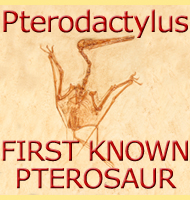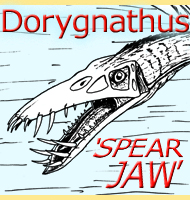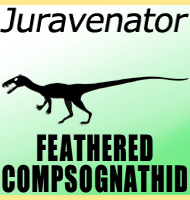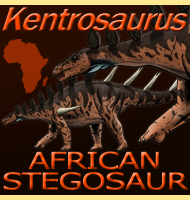


Qinglongopterus
Name:
Qinglongopterus
(Qinglong wing).
Phonetic: Kwing-long-op-teh-ris.
Named By: J. L�, D. M. Unwin, B. Zhao,
C. Gao and C. Shen - 2012.
Classification: Chordata, Reptilia,
Pterosauria, Rhamphorhynchidae, Rhamphorhynchinae.
Species: Q. guoi (type).
Diet: Piscivore/Insectivore.
Size: Estimated 34 centimetre wingspan.
Known locations: China, Hebei province -
Tiaojishan Formation.
Time period: Mid/Late Jurassic.
Fossil representation: Almost complete articulated
specimen, possibly of a juvenile.
Superficially
Qinglongopterus has been found to be very similar to
Rhamphorhynchus,
the pterosaur
that is the type genus of the Rhamphorhynchidae
and to
which Qinglongopterus is thought to be the most
closely related. This
however hints that both Qinglongopterus and Rhamphorhynchus
represented
their evolutionary limit as they are separated by many millions of
years yet show very little development, although it may be that they
were so well adapted to their particular ecological niche that they did
not require further changes to their bodies.
Pterosaurs
as a group are thought to have gone through a process of ‘modular
evolution’, which is where rather than the whole body changing all
at once, only certain parts change. For example, while the main
body stays the same, the proportions of the wing bones may change,
or instead the orientation of the neck vertebrae joining the skull may
shift. Such evolution can be seen in some pterosaurs such as
Darwinopterus
which have been described as being cobbled together from
a combination of primitive and advanced pterosaur parts.
Further reading
- A new rhamphorhynchid (Pterosauria: Rhamphorhynchidae) from the
Middle/Upper Jurassic of Qinglong, Hebei Province, China. - Zootaxa
3158:1-19. - J. L�, D. M. Unwin, B. Zhao, C. Gao & C. Shen -
2012.
----------------------------------------------------------------------------
More pterosaurs!
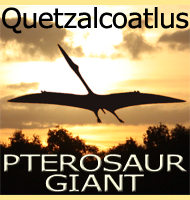 |
 |
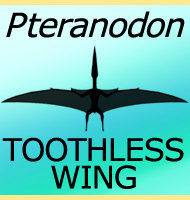 |
